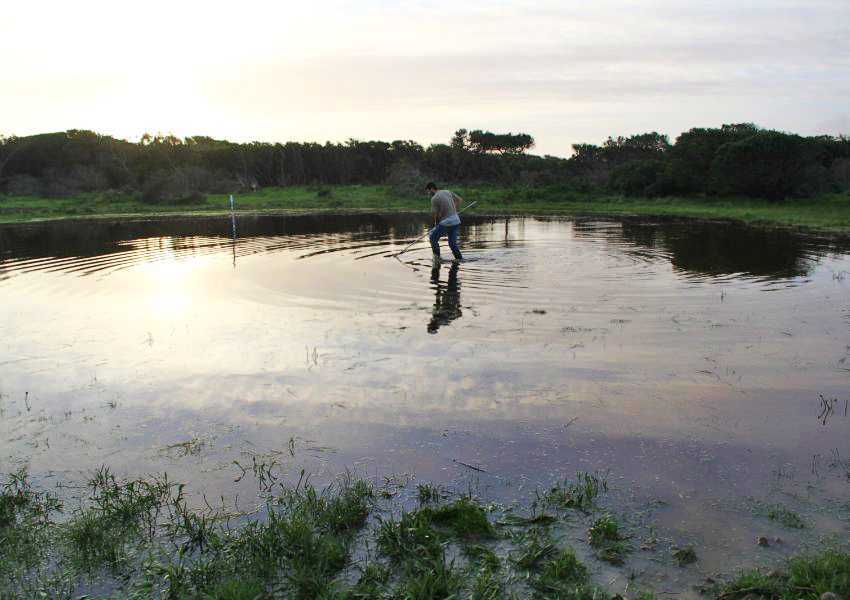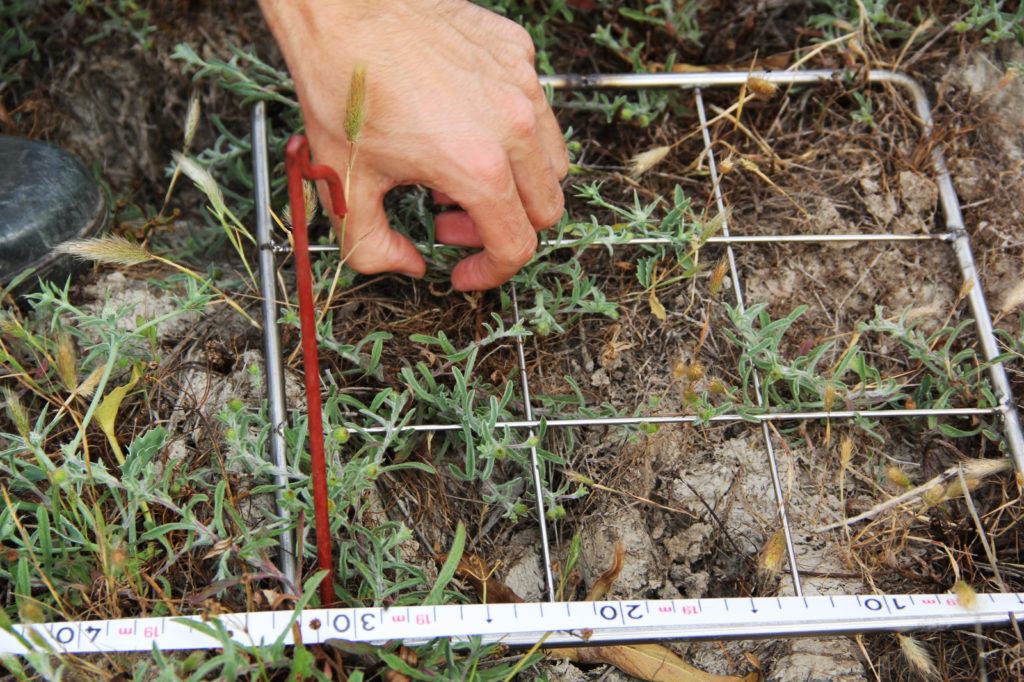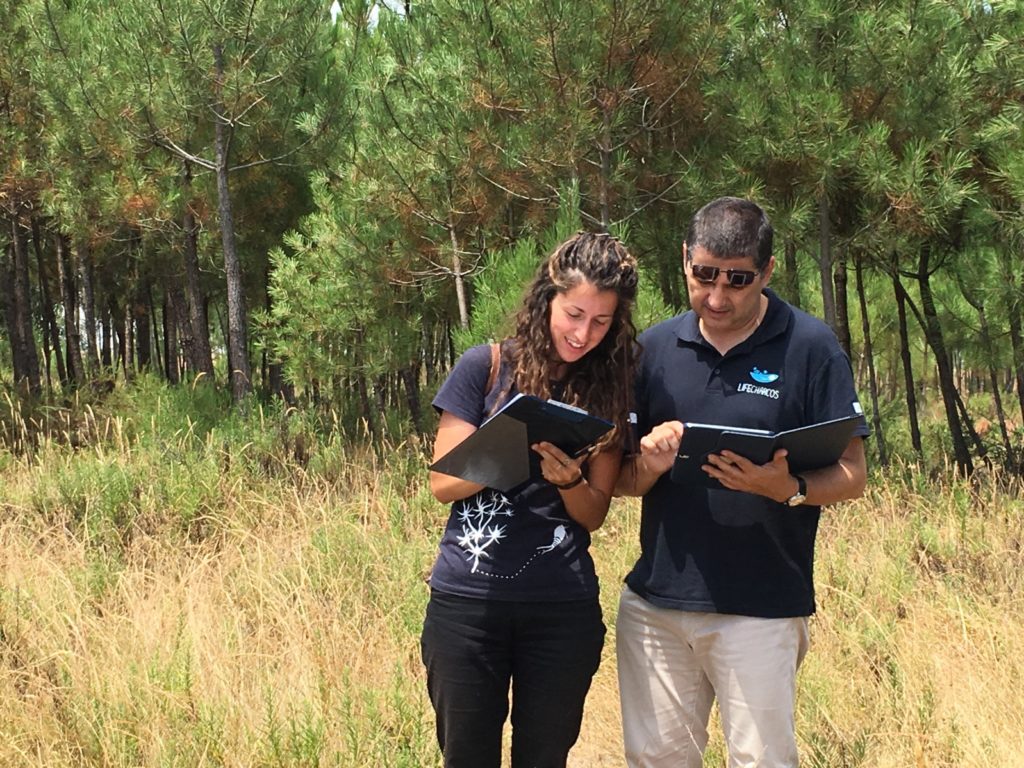The interventions carried out by the LIFE Charcos Project in the approximately 20 temporary ponds on the South West Coast of Portugal «have already started to show some positive signs and the state of conservation of these ponds is improving», say those responsible.
Although monitoring is nearing completion, preliminary results indicate “greater floristic richness and an increase in the number of amphibian species and their abundance”.
Monitoring actions are based on a qualitative and quantitative assessment of the various groups of living beings, in each pond, before and after field interventions.
This project, coordinated by the League for the Protection of Nature, is already reaching its final stretch. The closing session of LIFE Puddles will take place on the 20th of September, in Odemira. On that occasion, an overall balance of the project will be made, informing the results achieved by the team in the concrete actions of restoration and recovery of the habitat, as well as the contribution to the conservation of the Puddles Temporary to medium and long term. But some preliminary data has already been released.
Researchers who have been working on the LIFE Ponds Project explain that, with regard to flora, "the data are still being processed to later verify the evolution" of this component, but it is already possible to say that, "overall, many of the temporary ponds that underwent recovery interventions have a greater wealth of plants, including species typical of this precious habitat, compared to their conservation status before the intervention'.
This result was already expected, as parts of the interventions were aimed at restoring the topography of the ponds. “Now, the intervention ponds present a more adequate topography, with better distribution and structure of the vegetation belts, which allows the species to recolonize their natural habitat, thus improving their conservation status”, they explain.
There are about 248 species of plants associated with these ponds, 120 of which are bioindicators, ie biological indicators of habitat 3170 of the Habitats Directive. The plant diversity in each pond complex can vary from 13 to 72 species, depending on their conservation status.
As for the monitoring of amphibians in the intervention ponds, these ended at the end of last May, with 10 of the 13 known species on the Southwest Coast having been detected, namely, rib salamander, yellow-spotted salamander, pygmy newt, pointed-snouted frog, common toad, running toad, green frog, black-clawed toad, southern frog and the Lusitanian wart frog. The last three were the most detected species.
“Overall, the restoration and recovery actions of the ponds had a positive effect on amphibian communities, with an increase not only in the number of species, but also in abundance, when compared to the analysis before the interventions. There was also an increase in the number of species reproducing within these intervention ponds», add researchers linked to this component.
In the case of bats, monitoring was carried out by placing special recorders that record the sound frequencies that bats emit to orientate themselves, and a large number of records were collected, which are still under analysis.
As far as micromammals are concerned, namely for the two species sampled, the Cabrera rat and the water rat, their frequency remains “relatively low”.
As for the crustaceans, the late arrival of the rain made things a bit of a mess: «although the rainfall regime of the last year was a little atypical, which meant that the hydroperiod started later, in March. instead of November, as it is. Normal, Large Brachiopod crustacean communities are stable'.
The only fact to note is that adult specimens of the species were found. Tanymaxtix stagnalis in a temporary pond in the municipality of Vila do Bispo, “where cysts [eggs] of this species had already been found in the sediment, but adult specimens had never been seen before”.
«In addition to the Vicentinus Triops, chirocephalus diaphanus e branchipus cortesi that constitute the community of Large Branchiopods in this particular pond, it is now also possible to observe Tanymaxtix stagnalis».
LIFE Charcos is a project coordinated by the League for the Protection of Nature (LPN), which has a partnership with several public and private institutions, namely the University of Évora, the University of Algarve, the Municipality of Odemira and the Association of Beneficiaries of Mira.
This project, which is already in its final stretch, was financed 75% by the LIFE-Nature Program of the European Commission, with a global budget of around 2 million euros.
LIFE Puddles aims at the conservation of a habitat considered priority conservation by the Community Habitats Directive (Directive 92/43/EEC): the Puddles Mediterranean Temporary.
In progress since July 2013 and with completion on September 30, 2018, this project was implemented in the Natura 2000 Network's Site of Community Importance (SIC) of the Southwest Coast, which partly coincides with the Natural Park of Southwest Alentejo and Coast Vicentina, more specifically on the heaths of the municipalities of Odemira and Aljezur and the plateau of Vila do Bispo, because there are some of the main centers of temporary ponds at national level.





















Comments